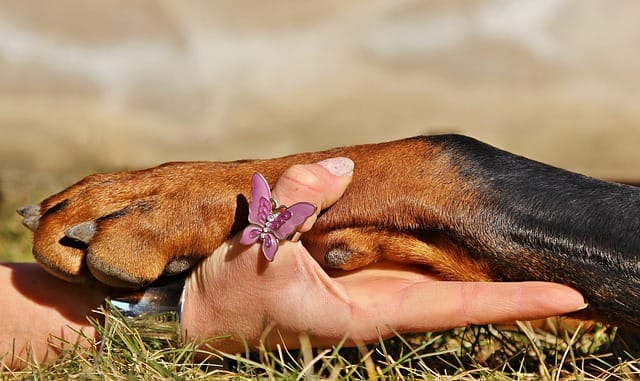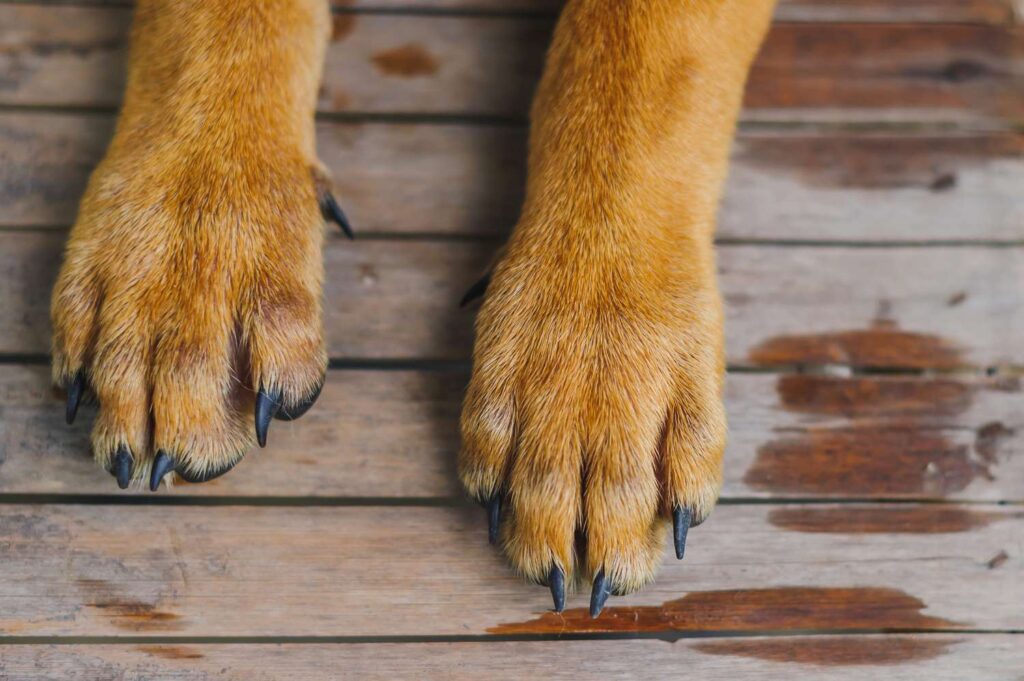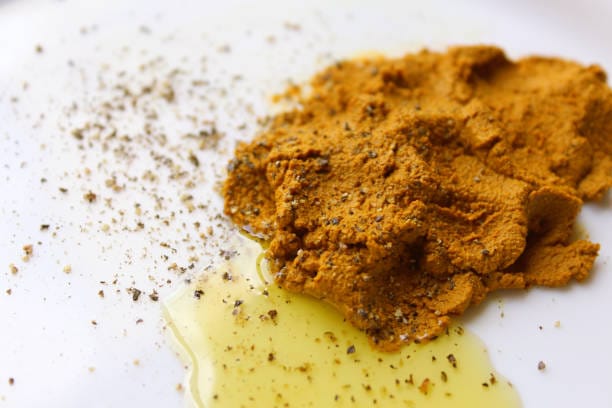

Cleaning your dog’s paws regularly offers several important benefits, both for their health and your home environment. Here are the key advantages:
- Prevents Dirt and Debris Build-Up
- During walks, dogs’ paws may pick up dirt, mud, leaves, and small objects like stones or twigs. By keeping their paws clean, these substances don’t build up and cause pain or harm.
- Frequent cleaning keeps your floors cleaner by preventing debris from being carried into your house.
- Lowers the Chance of Infections
- Cleaning eliminates dangerous pathogens or irritants that may result in paw infections, rashes, or fungal problems like fungal dermatitis.
- If dirt and moisture are trapped between the paw pads or toes, they may cause infections, including bacterial or fungal growth, especially if treatment is not received.
- Prevents Dryness and Cracking of Paw Pads
- Your dog may suffer more injuries or discomfort as a result of dry and cracked paw pads.
- By keeping the paw pads wet and supple, regular cleaning, and moisturizing (using natural solutions like coconut oil or dog-specific paw balms) helps avoid cracks and chapping.
- Removes harmful chemicals from Winter and Salt Exposure:
- During the winter, dogs may tread on snow, salt, or de-icing agents, which, if not thoroughly cleaned off, may cause irritation, or burns to their paw pads.
- If your dog licks their paws, regular cleaning keeps harmful pollutants from harming them or getting into their mouth.
- Enhances Hygiene and Minimizes Germ Transmission
- Frequent paw cleaning guarantees that your dog is not carrying germs, viruses, or dirt into your house from the outdoors.
Frequency of Paw Cleaning:
- After every walk: remove debris, dirt, and salt (especially in winter).
- Once a week: To maintain general hygiene and inspect for any issues like cuts, cracks, or irritations.
- More often if needed: For dogs with allergies, sensitivities, or if you’ve been walking in muddy or dirty areas.
A simple and safe solution to harsh chemicals for maintaining your dog’s hygiene is to clean their paws with natural solutions. Here’s a detailed guide utilizing everyday household objects:
What You’ll Need:
- Warm water
- A clean towel
- A bowl or basin
- Coconut oil is excellent for hydrating dry paws.
- Apple cider vinegar, or ACV: If your dog has a fungal illness, ACV can help clean and disinfect.
- Olive Oil (Optional): Olive oil can be used to remove sticky materials (like sap) or to moisturize.
- Baking soda: May be useful for minor cleaning and odor control.
- A soft cloth or sponge
- Optional: Cornstarch or baby powder (to help dry paws or reduce moisture)
Step-by-Step Guide for Cleaning Your Dog’s Paws Using Natural Products:
1. Gather the Natural Ingredients
2. Inspect the Paws
- Carefully check your dog’s paws for any debris, wounds, or irritations before cleaning. Any leaves, rocks, or twigs that might be wedged between the paw pads should be removed.
- Look for any foreign items, redness, or swelling that might need veterinarian care.
3. Clean the Paws with Warm Water
- To clean between the toes, use a sponge or your fingers to gently wash and remove filth; alternatively, dip your dog’s paws into warm water or wipe them with a soft, damp cloth
4. Use a Natural Cleaning Solution (if needed)
- Apple Cider Vinegar Solution: If your dog’s paws are dirty or have a mild fungal smell, mix a 1:1 ratio of apple cider vinegar and water. Wipe the paws with a cloth or sponge dipped gently in the solution, paying particular attention to the pads and spaces between the toes. ACV aids in skin cleansing and pH balance.
- Coconut Oil or Olive Oil: After cleaning, apply a tiny bit of coconut oil or olive oil to the paw pads if your dog’s paws are dry or cracked. Both oils can relieve dry or rough pads because of their healing and hydrating qualities.
5. Dry the Paws Thoroughly
- After cleaning and rinsing the paws, use a fresh towel to completely dry them. Moisture can cause fungal diseases, so be sure to dry between the toes and paw pads. To absorb any last traces of moisture, you can use baby powder or cornstarch to lightly dust their paws for more dryness. This is particularly helpful if you live in a humid climate or if your dog’s paws tend to stay wet.
RELATED POSTS
View all


